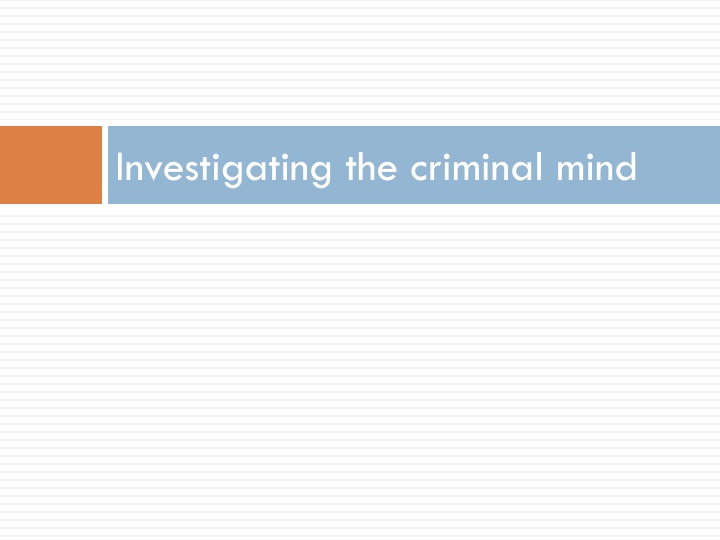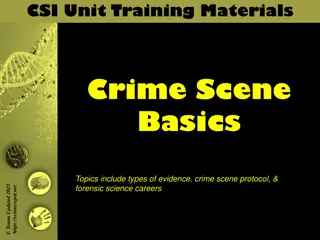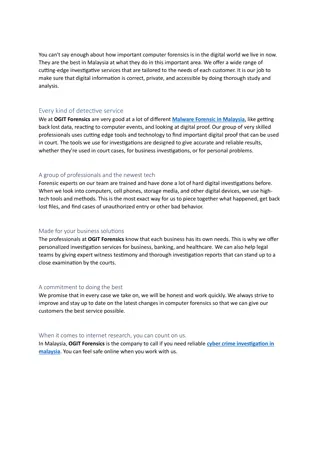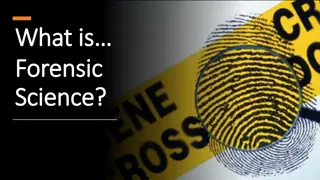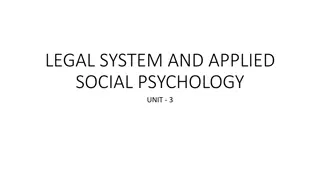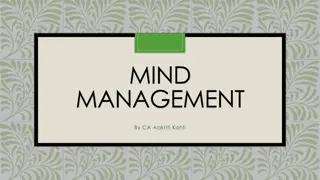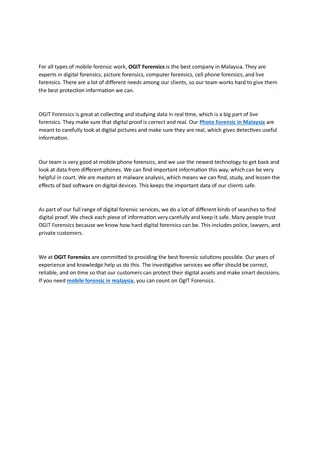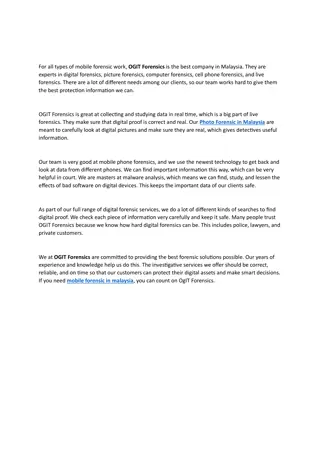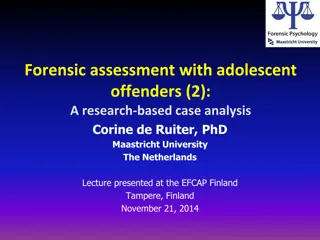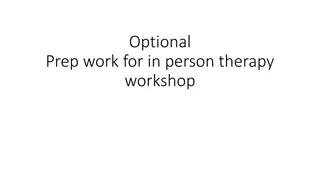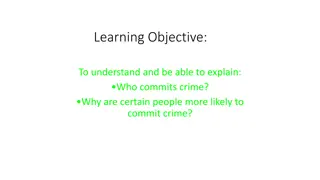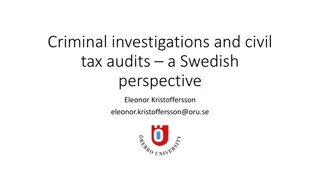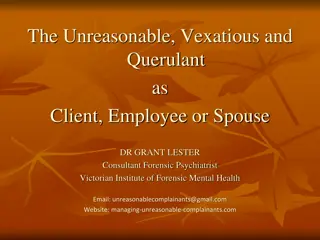Unraveling the Criminal Mind: A Look Into Forensic Psychiatry
Delve into the realm of forensic psychiatry where examining physical evidence helps uncover the who, what, and how of crimes, while forensic psychiatrists focus on determining the why. Contrasting clinical and forensic psychiatry, the role of forensic psychiatrists involves assessing various aspects such as the influence of substances, competency to stand trial, understanding of reality, and creating psychological profiles. Techniques like medical histories, testing the mind with personality inventories and cognitive tests, along with projective testing and interviews help in assessing suspects with caution against controversial techniques like hypnosis and truth serum.
Uploaded on Sep 29, 2024 | 2 Views
Download Presentation

Please find below an Image/Link to download the presentation.
The content on the website is provided AS IS for your information and personal use only. It may not be sold, licensed, or shared on other websites without obtaining consent from the author.If you encounter any issues during the download, it is possible that the publisher has removed the file from their server.
You are allowed to download the files provided on this website for personal or commercial use, subject to the condition that they are used lawfully. All files are the property of their respective owners.
The content on the website is provided AS IS for your information and personal use only. It may not be sold, licensed, or shared on other websites without obtaining consent from the author.
E N D
Presentation Transcript
Examination of physical evidence helps determine the who, what, and how of crime Forensic psychiatrists help determine the why
Clinical vs. Forensic Psychiatry Clinical Improve patients condition Forensic Dissect person s personality Goal Relationship Trusting Adversarial Dialogue Truthful Can include attempts at lying and deceit
Role of forensic psychiatrist may include: Assess the role of alcohol and drugs in a defendant s conduct Determine competency to stand trial Assess a subject s understanding of reality and responsibility Offer a judgment regarding the suspect s state of mind at the time of the crime (NOTE: Sanity is ruled on by the court) Create a psychological profile of the type of individual who likely committed the crime
Techniques of assessment of suspects: 1st: medical history or physical exam can reveal medical problems that may alter thinking or understanding 2nd: testing the mind 3 categories Personality inventories: assess subject s basic personality type; highly standardized and reliable Projective testing evaluate person s thought processes; less standardized and more subjective but may help uncover obsessions and fantasies that drive crime (ex. Inkblot exam) Cognitive testing assess subject s intelligence and ability to understand his other own behavior (ex. IQ test)
Projective testing http://mrmaples.com/Testing%20Dates.htm Interpret an ink blot See full size image Draw a picture Interpret a picture
Techniques of assessment of suspects: 3rd: interview the subject investigate areas of concern from earlier tests --Questioning starts out broad gradually becomes more probing --Focus is to uncover motivations --Be cautious of lying and false confessions **controversial techniques= hypnosis and truth serum Read case study ( Hypnotizing Kenneth Bianchi, page 57)
Source of content: Lyle, D.P. (2004). Forensics for Dummies. Indianapolis: Wiley Productions Inc. (pg. 57)
Serial Offenders List common crimes: List possible motives for such crimes: How do serial killers differ?
Definition/characteristics of serial killing: Suspect kills more than one person at different times and locations with cooling-off periods between the killings. Most often prey on strangers Motives are private and personal (not obvious) Fantasy plays large role http://upload.wikimedia.org/wikipedia/en/thumb/0/04/Zodiac340cipher.png/250px-Zodiac340cipher.png http://upload.wikimedia.org/wikipedia/commons/d/d1/Zodiac-logo.png Zodiac Killer
Criminal Profiling Purpose: the profile may not lead to an exact individual, but may help narrow the focus of the investigation Rational behind profiling: behavior reflects personality Descriptors used in profiling: Age Sex Residency Proximity Work history Educational level Race Social skills
Linking Criminals Violent Criminal Apprehension Program (VICAP) and PROFILER= FBI databases to help match serial offenders with crimes and profiles
Source of content: Lyle, D.P. (2004). Forensics for Dummies. Indianapolis: Wiley Productions Inc.
